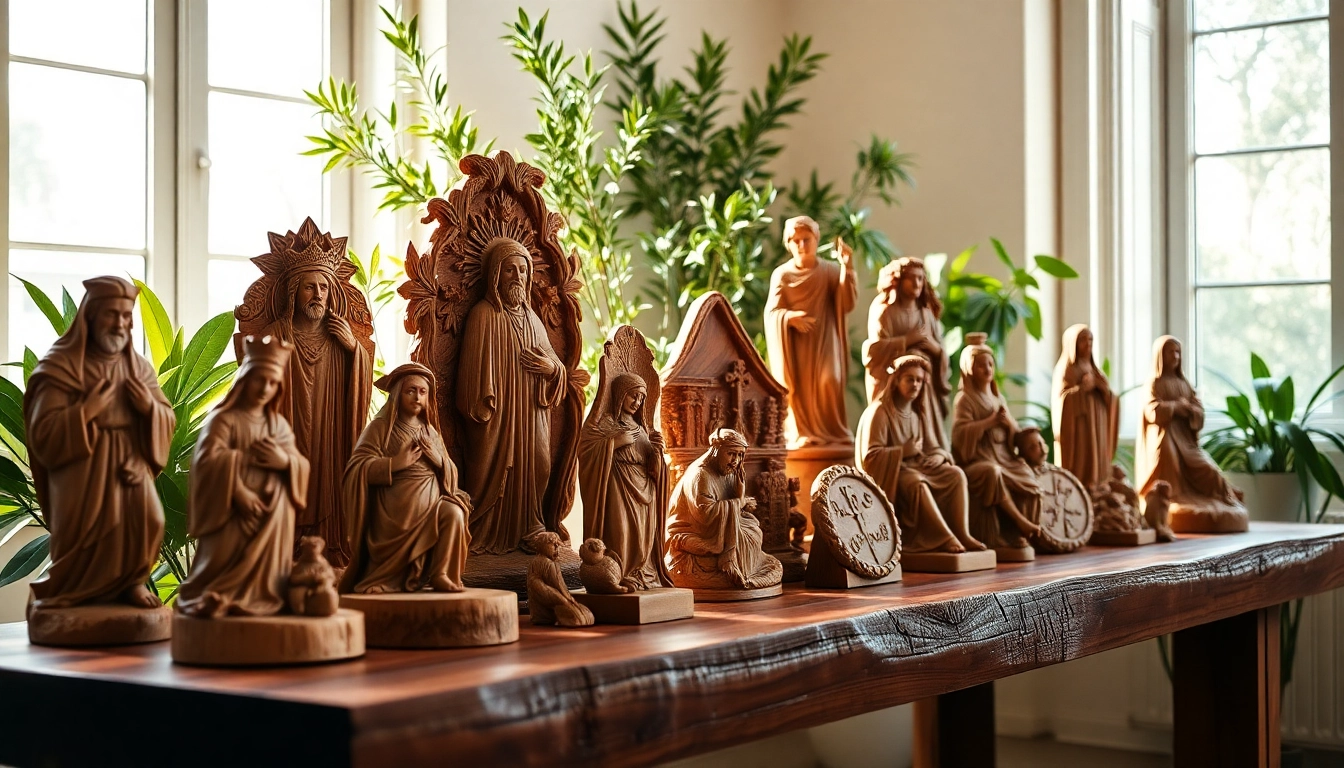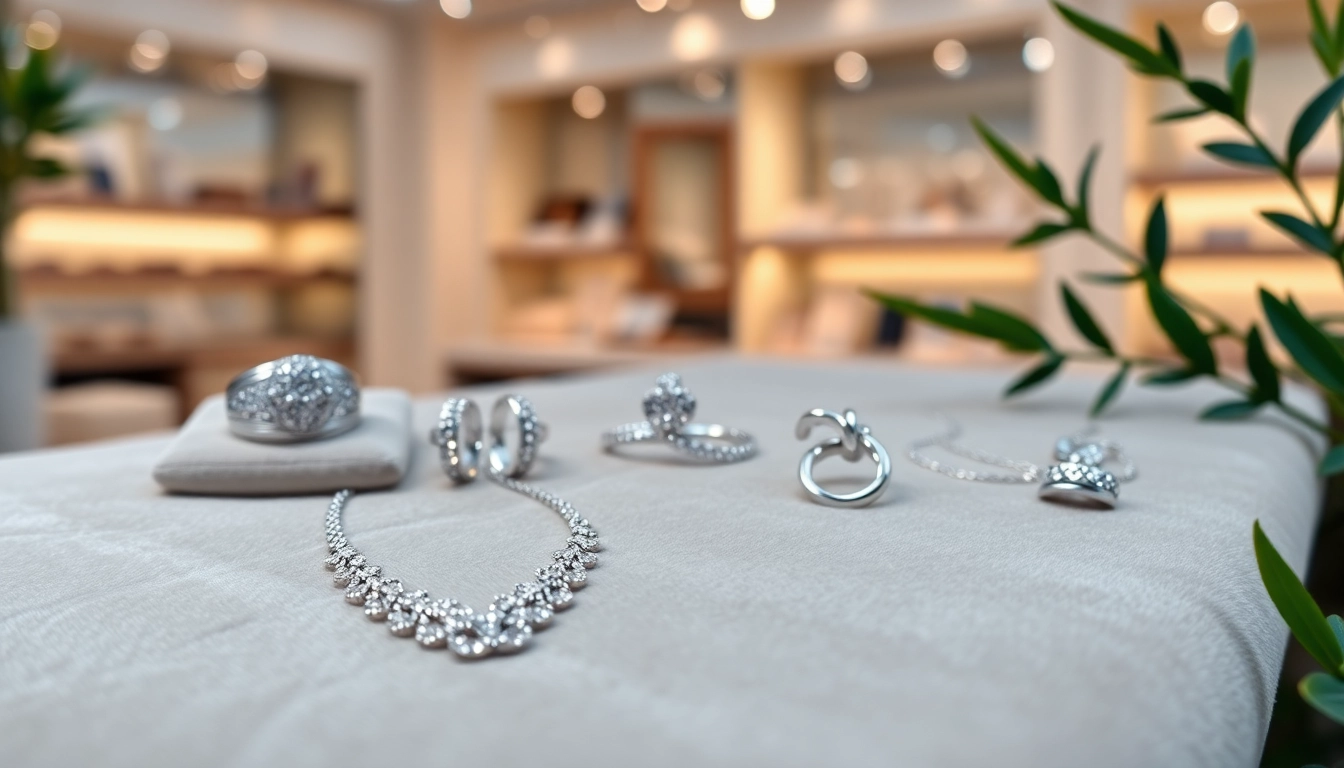Introduction to Olive Wood Carvings
What are Olive Wood Carvings?
Olive wood carvings are intricate art pieces crafted from the wood of olive trees. These carvings are often handmade by skilled artisans, utilizing traditional techniques passed down through generations, particularly in regions like Bethlehem and Jerusalem. The unique grain patterns and warm, rich hues of olive wood make each piece distinct, offering both aesthetic beauty and a tactile quality that draws observers in.
Renowned for their religious and cultural significance, olive wood carvings often depict religious figures, nativity scenes, and various decorative items that serve not only as art pieces but also as meaningful symbols in various spiritual contexts.
Historical Significance of Olive Wood Carvings
The history of olive wood carving can be traced back thousands of years, deeply rooted in the traditions of the Mediterranean region. Olive trees are not only a source of sustenance in the form of olives and olive oil but also represent peace, wisdom, and prosperity in various cultures. Early artisans began to transform the durable wood from these trees into functional and artistic objects, which flourished in both everyday life and ceremonial practices.
The Biblical significance of the olive tree, often referenced in scriptures, adds further cultural depth to its carvings. For instance, olive branches are symbols of peace and reconciliation, making these carvings resonate with spiritual meaning for many communities. As Christianity spread throughout the globe, so too did the art of olive wood carving, firmly establishing its place in religious iconography.
Characteristics of Quality Olive Wood Art
High-quality olive wood carvings are characterized by several key factors that distinguish them from mass-produced items. The following attributes denote a genuine piece:
- Grain Patterns: Quality carvings showcase the natural beauty of olive wood, with unique grain patterns that enhance their appeal.
- Craftsmanship: The skill of the artisan is reflected in the detail and precision of the carving. Fine craftsmanship indicates a higher level of dedication and expertise.
- Finish: A well-finished piece will feel smooth to the touch without any rough edges or blemishes.
- Authenticity: Genuine olive wood carvings are often accompanied by certifications or documentation indicating their origin, especially if crafted in the Holy Land.
The Crafting Process of Olive Wood Carvings
Traditional Techniques Used in Carving
The art of olive wood carving involves several traditional techniques that have been refined over centuries. Starting with the selection of the wood, artisans typically choose pieces from ancient trees that have reached maturity, as these provide the best workability and aesthetic quality.
Commonly employed techniques include chisel carving, where artisans use chisels to slowly and meticulously shape the wood, and whittling, which involves removing thin slices of wood to create a detailed effect. Some artists incorporate a combination of both methods to achieve depth and dimension in their pieces.
Tools and Materials Required
The tools used in olive wood carving vary based on the complexity of the design, but commonly include:
- Chisels: A variety of chisels, including flat, curved, and pointed, are used for detailed work.
- Knives: Specialized carving knives allow artisans to make precise cuts and detail work.
- Saws: For larger sections of wood, saws are used to cut the wood into manageable sizes.
- Sandpaper: Essential for smoothing out surfaces and preparing for finishing touches.
Artisans often combine these tools with their skills to create beautiful, authentic pieces that resonate with historical significance.
The Role of Artisans in the Creation of Olive Wood Art
Artisans are the backbone of the olive wood carving tradition, embodying rich cultural heritage and skills honed through years of practice. These craftsmen often begin their apprenticeships as children, learning the nuances of the trade under the guidance of older artisans.
The role of an artisan extends beyond merely creating objects; it includes preserving cultural identity, storytelling, and promoting the rich history of olive wood carving. Their passion not only sustains the craft but also helps to support their communities and families economically, often providing vital income through the sale of their pieces.
Types of Olive Wood Carvings
Religious and Spiritual Figures
Many olive wood carvings are designed as religious and spiritual figures, including representations of Christ, the Virgin Mary, and various saints. These carvings often serve as focal points in homes and places of worship, embodying faith and devotion.
Nativity scenes are particularly popular during the holiday season, with intricate designs capturing the essence of the Christmas story. The craftsmanship involved in these pieces is exceptional, highlighting the artisan’s ability to convey emotion and spirituality through wood.
Decorative Items for Home Décor
In addition to spiritual figures, olive wood carvings also encompass a wide range of decorative items suitable for home décor. These include bowls, cutting boards, wall art, and figurines that reflect the beauty of the wood and the skill of the artisans.
Homeowners often choose olive wood decorations for their aesthetic appeal and unique character, seeking items that tell a story and enhance their living spaces. Due to their uniqueness, these decorative pieces can also serve as enticing conversation starters.
Custom Commissions and Unique Pieces
Many artisans offer custom commission services, allowing customers to request unique pieces tailored to their specific desires. This could range from a personalized carving of a family member to a significant religious figure or even a bespoke piece that incorporates elements meaningful to the customer.
These custom carvings not only hold personal value for the buyer but also foster a closer relationship between the artisan and the customer, enhancing the cultural significance of each piece.
Purchasing Olive Wood Carvings
Where to Find Authentic Olive Wood Art
Authenticity is paramount when purchasing olive wood carvings. Potential buyers should seek out well-established galleries, directly from artisans in the Holy Land, or reputable online stores dedicated to fair trade practices. Many of these establishments ensure that their products are sourced directly from local artisans, providing both quality assurance and supporting the local economy.
Visiting the Holy Land can be especially rewarding, as it allows individuals to meet the artisans in person, observe the carving process, and select pieces that resonate personally.
Factors to Consider When Buying Olive Wood Carvings
When purchasing olive wood carvings, consider the following factors to ensure you are making a smart investment:
- Origin: Confirm the origin of the wood and the maker, ensuring the piece is authentic and ethically sourced.
- Quality: Look for detailed craftsmanship, smooth finishes, and unique designs that indicate the piece is handmade.
- Purpose: Think about whether the carving is for decoration, gift, or personal solace, guiding your choice in style and subject matter.
- Price: Understand that higher-quality pieces may be more expensive due to the labor and technique involved, but they can be worth the investment for both beauty and durability.
Caring for Your Olive Wood Art Collection
Maintaining the integrity of olive wood carvings requires proper care. To keep these pieces looking their best:
- Cleaning: Use a soft, dry cloth to dust occasionally without using harsh chemicals that could harm the wood.
- Polishing: Occasionally applying a food-safe mineral oil can help maintain the wood’s luster and protect against drying out.
- Avoid Moisture: Keep carvings away from high moisture areas to prevent warping and cracking.
By following these simple care tips, collectors can preserve the beauty and craftsmanship of their olive wood treasures for generations.
The Cultural Impact of Olive Wood Carvings
Olive Wood Carvings in Religious Traditions
Given their historical ties to Christianity and other religious traditions, olive wood carvings carry profound spiritual significance. They are often believed to imbue spaces with a sense of serenity and devotion. From churches to personal altars, these carvings serve as reminders of faith and the stories of beloved figures and narratives.
Additionally, they are frequently gifted to believers visiting the Holy Land, symbolizing a connection to faith, culture, and history. This practice underscores the role olive wood carvings play in modern worship and personal spirituality.
Supporting Local Artisans and Communities
Purchasing olive wood carvings goes beyond simply acquiring art; it plays a significant role in supporting local artisans and preserving their traditions. Many artisans rely on the sale of their handcrafted pieces as their primary source of income, making it essential for patrons to seek out authentic works.
By buying directly from artisans or fair-trade organizations, customers contribute to sustainable economies, aid in community development, and keep centuries-old traditions alive. These purchases help empower artisans to pass down their skills and stories to future generations.
Future Trends in Olive Wood Carving Art
The future of olive wood carvings looks promising as artisans continue to innovate while honoring traditional techniques. Increasing awareness of sustainable practices and ethical sourcing is paving the way for modern collectors to prioritize local and handcrafted items.
Moreover, digital platforms enable artisans to reach global audiences, potentially increasing demand for unique and personalized olive wood carvings. While some artisans may integrate contemporary designs or mixed materials into their work, the artistry and heritage of traditional carving methods remain central to this evolving craft.



